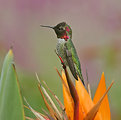I'm a bit puzzled by what you mean by 'hard light (no strobe)'. I guess that you mean hard lighting with some kind of continuous source like tungsten or HMI. You can use strobes (flash) to achieve hard lighting - begin by removing the reflectors to leave the bare tube.
I don't know what speed film/digital you are using, or how much equipment and space you have, but I think that 1/60 at f/11 with hair at f/22 might be a struggle with tungsten light. That's a lot of light (and heat). How slow you can go with your shutter speed depends on the sitter, but with tungsten lighting I'd usually shoot at around 1/30 at f/5.6 with EI 200 film, and I regard that as a lot of light!
There is one caveat with using tungsten for hard lighting: you can remove the reflector(s), but don't ever remove the safety screen from instruments with quarz halogen lamps. You only have to see the effects of one of those exploding once to know that no matter how rare it is, it must never happen when the flying pieces of red-hot glass could hit someone.
The alternative to bare lamps is a focussing spot (ellipsoidal spot, 'Leko') or spotted fresnel (eg dedo 650 at its narrowest beam setting) kept well away - you want the light source to appear small when seen from the sitter. You can even make masks to reduce the size of the source, but be careful about getting them too close to the hot lamp.
Direct sunlight, with reflectors and mirrors, is an excellent hard source, but not always available in the studio!
I'm afraid that I haven't explained that very well. I find it a lot easier to demonstrate than to write about.
Best,
Helen
|
















